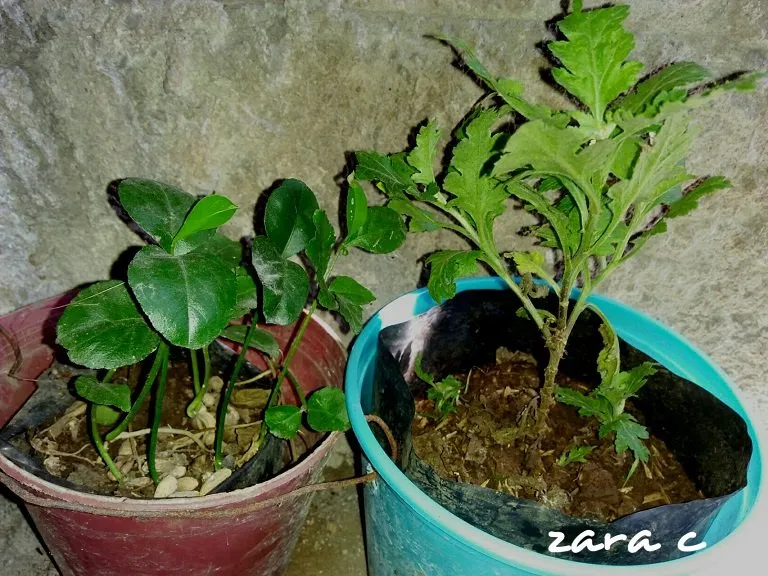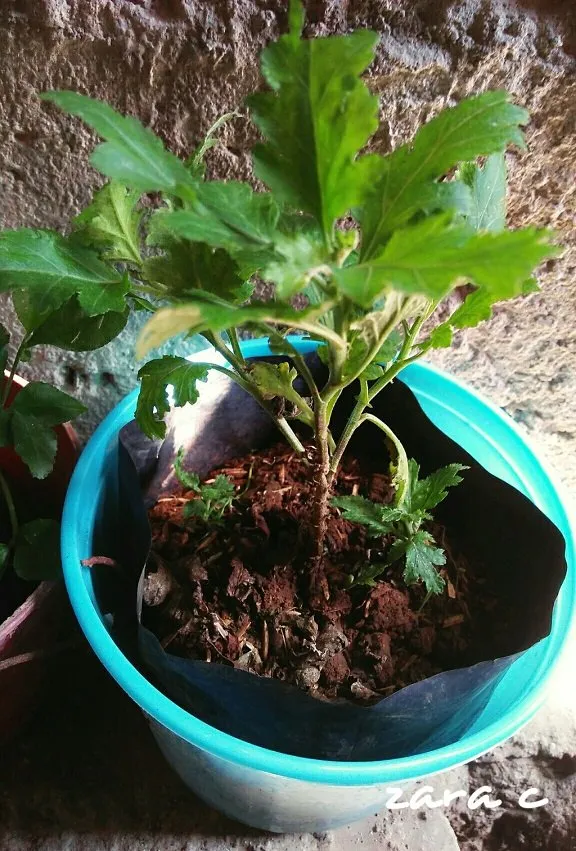We recently have a new plant and it is considered as a herbal plant. It is called damong marya in our local language Filipino. I did a quick research of what it is called in English and there were several possible names such as "wormwood, sagebrush, sagewort and mugwort".

I placed it in an empty ice cream tub rather than buying a new pot for it. Then placed it besides our lemon tree seedlings pot as shown in the photo above.

It used to be a common plant in the neighborhood before as far as I can remember. Not aware of its uses, we usually just ignore this plant and just treated as an ornamental plant. It is a nice herbal plant to have since it was believed to treat various types of illnesses or have various applications.
Below are some of the possible uses or applications of Damong Marya.
-"Decoction of fresh leaves and flowering tops, 50 g in a pint of water, 4-5 glasses daily as expectorant.”
“- Juice of leaves used as vulnerary, to heal wounds and cuts.”
“- As emmenagogue: A strong decoction of leaves, 6-7 glasses a day to induce menstruation; also, for post-partum abdominal cramps.”
“- Juice of leaves applied to head of young children during convulsions.”
“- For intestinal deworming, decoction of boiled leaves, followed by the juice of aloe or other purgative plants.”
“- Decoction of leaves used for abdominal colic pains.”
“- Leaf poultice for headache and skin diseases.”
“- Decoction of dried leaves used for asthma and dyspepsia.”
“- Juice used externally for scabies, eczema, herpes.”
“- With ginger: Pounded leaves, mixed with ginger are wrapped in banana leaves and heated over a fire, and applied to wounds and swollen and inflamed dermal afflictions.”
“- Stimulates appetite, young leaves used for anorexia.”
“- Infusion of aromatic leaves used to induce menstruation. Also, used as abortifacient, but considered too mild a uterine stimulant to be reliable for that purpose.”
“- Used as infusion and electuary for obstructed menses and hysteria.”
“- Externally, used as alterative as fomentations for skin diseases and foul ulcers.”
“- Expressed juice of plant applied to the head of children to prevent convulsions.”
“- In Uruguay, plant used as vermifuge.”
“- In China, used as hemostatic, antiseptic, and carminative; used as decoction for hemoptysis, dysentery, menorrhagia, postpartum hemorrhages, as a wash for wounds and ulcers, and to relieve gripping pains of indigestion, diarrhea, or dysentery.“
“- Juice of plant used for tapeworm.”
“- A tincture, made up in native spirits, used as nerve sedative e in abdominal pain and in labor.”
“- In Persia, Afghanistan and throughout India, strong decoction used as vermifuge; a weak decoction used in children for measles.”
“- In Malaya leaves used as carminative and hemostatic.”
“- Leaves, dried and cut in small fragments, used to cauterize wounds.”
Source: http://stuartxchange.com/Damong.html
Photos taken using my mobile phone.